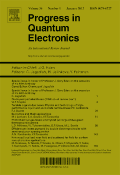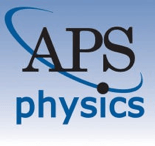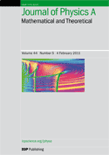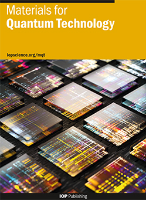
EPJ Quantum Technology
Scope & Guideline
Fostering Collaboration in the Quantum Realm
Introduction
Aims and Scopes
- Quantum Communication and Cryptography:
Research in this area includes protocols for quantum key distribution, authentication methods, and secure communications leveraging quantum properties to enhance security and privacy. - Quantum Computing and Algorithms:
This scope covers advancements in quantum algorithms, quantum architectures, and methods for improving computational efficiency, including quantum annealing and quantum simulations. - Quantum Education and Outreach:
The journal aims to broaden access to quantum technologies through educational initiatives, including courses and MOOCs designed to engage a wider audience in quantum science. - Quantum Sensors and Measurement:
Research related to the development of quantum sensors, including their applications in telecommunications and environmental monitoring, as well as techniques to enhance measurement precision. - Quantum Materials and Devices:
This focus encompasses the study of materials and devices that enable quantum phenomena, such as superconductors and trapped ions, which are critical for the implementation of quantum technologies. - Interdisciplinary Quantum Applications:
The journal also explores applications of quantum technologies across various fields, including finance, healthcare, and information technology, promoting a multidisciplinary approach.
Trending and Emerging
- Integration of Quantum Machine Learning:
There is an increasing trend towards exploring the intersection of quantum computing and machine learning, particularly in developing algorithms that leverage quantum properties for enhanced learning capabilities. - Quantum Networking and Entanglement:
Research on quantum networks, including entanglement distribution and multi-party protocols, is gaining momentum as the demand for secure communication systems grows. - Quantum Error Correction and Fault Tolerance:
As quantum systems scale, there is a significant focus on developing robust error correction techniques and fault-tolerant quantum computation methods to ensure reliable operation. - Quantum Technology in Industry and Commercialization:
The journal is seeing a rise in papers discussing the practical applications of quantum technologies in industry, including financial services and telecommunications, reflecting a shift towards commercialization. - Cross-Disciplinary Quantum Applications:
Emerging themes include the application of quantum technologies in diverse fields such as healthcare, environmental science, and military applications, showcasing the versatility of quantum innovations.
Declining or Waning
- Classical Quantum Computing Comparisons:
There has been a noticeable decrease in papers that primarily compare quantum computing to classical computing without proposing novel quantum advancements, suggesting a shift towards more practical quantum applications. - Low-Impact Quantum Applications:
Research focused on niche or low-impact applications of quantum technology has waned, as the field moves towards more impactful and scalable solutions. - Basic Quantum Mechanics Education:
Publications that focus solely on fundamental quantum mechanics education without direct applications to quantum technologies have become less frequent, as the emphasis shifts towards applied quantum education. - Theoretical Quantum Models with Limited Practicality:
There is a reduced focus on purely theoretical models that do not have clear pathways to practical implementation or experimental validation, indicating a trend towards more applied and experimental research.
Similar Journals

QUANTUM INFORMATION & COMPUTATION
Driving Insights in Quantum Mechanics and ComputationQUANTUM INFORMATION & COMPUTATION is a leading academic journal dedicated to the rapidly evolving fields of quantum information theory and quantum computing. Published by RINTON PRESS, INC, this journal serves as a pivotal platform for disseminating groundbreaking research, advancements, and theoretical insights in various domains including computational theory, mathematical physics, and high-energy physics. With its ISSN 1533-7146, the journal has established a solid reputation since its inception in 2001 and continues to engage researchers up to 2024. Despite its current standing in Q4 and Q3 quartiles across various categories, QUANTUM INFORMATION & COMPUTATION provides valuable contributions by fostering discussions on interdisciplinary applications and theories that challenge conventional paradigms. While the journal does not offer open access, it still supports a wide range of research topics, providing a vital resource for academics, professionals, and students keen on exploring the complex interplay between quantum mechanics and computation. By focusing on innovative techniques and theoretical developments, this journal is essential for anyone aiming to be at the forefront of the quantum revolution.

Physical Review Applied
Unleashing Innovation in Physics ResearchPhysical Review Applied is a prestigious journal published by the American Physical Society that serves as a vital platform for researchers in the field of applied physics. With an esteemed Q1 ranking in the Physics and Astronomy category and a commendable Scopus rank of #35 out of 243, this journal represents a significant milestone in disseminating cutting-edge research. Established in 2014, it focuses on the latest advancements and applications in various realms of physics, promoting interdisciplinary collaboration and innovation. Although not an open-access journal, Physical Review Applied offers a range of access options for readers and institutions, ensuring that high-impact research remains widely available. Researchers, professionals, and students alike will find this journal an essential resource for staying at the forefront of applied physics developments.

Frontiers of Physics
Elevating Physics Knowledge to New HeightsFrontiers of Physics, published by Higher Education Press, is a premier open-access journal dedicated to fostering innovative research and excellence within the field of physics. With an ISSN of 2095-0462 and an E-ISSN of 2095-0470, this rapidly growing journal has established itself as a valuable platform for disseminating cutting-edge findings, covering a diverse range of topics from theoretical frameworks to experimental advancements. Notably, Frontiers of Physics has achieved an impressive Q1 ranking in the 2023 Scopus Quartiles for Physics and Astronomy, securing a competitive 5th out of 81 positions in its category, reflecting a high impact factor that underscores its importance to the scientific community. Since its inception in 2011 and continuing through 2024, the journal aims to bridge the gap between academia and industry, encouraging collaboration among researchers, professionals, and students alike. Its commitment to open access ensures that high-quality research is readily accessible, thereby promoting knowledge sharing and advancement in the global physics community. Explore the potential of your research in Frontiers of Physics, where the future of physics flourishes.

PROGRESS IN QUANTUM ELECTRONICS
Unveiling Breakthroughs in Quantum ElectronicsPROGRESS IN QUANTUM ELECTRONICS, published by PERGAMON-ELSEVIER SCIENCE LTD, is a premier international journal that serves as a critical forum for the dissemination of high-quality research in the fields of atomic and molecular physics, electrical engineering, and materials science. With its esteemed Q1 category ranking in several disciplines, including Atomic and Molecular Physics, Electrical and Electronic Engineering, and Electronic, Optical and Magnetic Materials, this journal commands a high impact factor and is recognized for its rigorous peer-review process. Established in 1969 and evolving through various phases, the journal currently compiles cutting-edge research that drives advancements in quantum technologies. Researchers, professionals, and students alike are invited to explore a wealth of knowledge and stay updated on pioneering developments in quantum electronics, enhancing their understanding and contributing to the progression of this dynamic field.

PHYSICAL REVIEW A
Shaping the Future of Atomic and Molecular StudiesPHYSICAL REVIEW A, published by the American Physical Society, is a leading journal in the field of Atomic and Molecular Physics and Optics, boasting a Q1 category ranking in its area for 2023. With an ISSN of 2469-9926 and an E-ISSN of 2469-9934, this journal plays a pivotal role in disseminating high-quality research findings, theories, and methodologies that shape current understanding and advancements in the discipline. Although not an open-access journal, it remains highly accessible to professionals and academia through institutional subscriptions. The journal's impactful contributions are evident from its Scopus rank of #70 out of 224 in the field, placing it in the 68th percentile for scholarly impact. As a hub of innovative research and a vital resource for both students and seasoned researchers alike, PHYSICAL REVIEW A remains essential for those seeking to stay abreast of breakthroughs in atomic and molecular studies, as well as optics and photonics.

Journal of Physics A-Mathematical and Theoretical
Fostering Collaboration in Cutting-Edge Physics ResearchThe Journal of Physics A-Mathematical and Theoretical, published by IOP Publishing Ltd, is a premier peer-reviewed journal dedicated to advancing the understanding of mathematical physics, modeling, and simulation methods within the dynamic field of physics and astronomy. Established in the United Kingdom, this journal has made significant contributions over the years, maintaining a strong reputation as a Q1 and Q2 ranked journal across various categories, reflecting its influence in the scientific community. With a focus on innovative and theoretical approaches, it provides a platform for researchers, professionals, and students to disseminate their findings and engage with groundbreaking methodologies. Despite its lack of open access options, the journal's high impact factor and Scopus rankings, which place it in the top percentiles across multiple disciplines, underscore its critical role in fostering scholarly communication and collaboration in mathematical and theoretical physics. As we move through its converged years from 2007 to 2024, the Journal of Physics A continues to be a pivotal contributor to the landscape of contemporary physics, stimulating discussions and advancing knowledge in an ever-evolving realm.

JOURNAL OF EXPERIMENTAL AND THEORETICAL PHYSICS
Innovating Understanding in Physics and BeyondJournal of Experimental and Theoretical Physics is a distinguished publication in the field of physics, dedicated to disseminating pioneering research and fostering intellectual discourse in both experimental and theoretical domains. Published by Pleiades Publishing Inc, this journal has established itself as a crucial platform for physicists, with a commendable Q3 categorization in the 2023 rankings within Physics and Astronomy, illustrating its impactful contributions to the discipline. The journal features a wide array of articles that delve into the intricacies of physical theory, experimental techniques, and applications, making it an invaluable resource for researchers, professionals, and students alike. Although it operates under a traditional access model, its longstanding history, dating back to 1980 and converging years through to 2023, underscores its commitment to advancing the frontiers of physics knowledge. The journal is also notable for its engagement in the scientific community, aiming to bridge the gap between theoretical predictions and experimental validations. As a part of Pleiades Publishing, it continues to uphold rigorous standards of academic excellence, inviting contributions that push the boundaries of current understanding and stimulate further exploration in the fascinating world of physics.

npj Quantum Information
Advancing the frontiers of quantum knowledge.npj Quantum Information is a premier open-access journal published by NATURE PORTFOLIO, focusing on advancing the interdisciplinary field of quantum information science. First launched in 2015, the journal has rapidly established itself as a leading platform for innovative research, reflected in its impressive Q1 category rankings across multiple fields, including Computational Theory and Mathematics, Computer Networks and Communications, and Statistical and Nonlinear Physics. With an emphasis on publishing high-quality research, npj Quantum Information aims to disseminate pivotal findings that shape the future of quantum technologies and their applications. Its open-access model further enhances the accessibility of cutting-edge scholarly work, fostering collaboration and knowledge sharing among researchers, professionals, and students worldwide. With its commitment to excellence, the journal plays a crucial role in the intellectual landscape of quantum science, inviting contributions that push the boundaries of understanding and innovation.

Materials for Quantum Technology
Illuminating the Path to Quantum AdvancementsMaterials for Quantum Technology is a pioneering open-access journal published by IOP Publishing Ltd, dedicated to advancing the understanding and application of quantum materials and their technologies. Since its inception in 2021, this journal has become a significant platform for researchers, professionals, and students in the fields of condensed matter physics and materials science. With an impressive impact ranking, including a rank of #156 in Condensed Matter Physics and #86 in Atomic and Molecular Physics within Scopus, it offers an interdisciplinary view that facilitates the exchange of innovative ideas and research findings. The journal's open-access model ensures that groundbreaking research is accessible to a global audience, fostering collaboration in the rapidly evolving field of quantum technology. Materials for Quantum Technology continues to support the growing community of quantum researchers, playing a crucial role in the development of new materials and technologies that will shape the future of computation, communication, and sensing.

Quantum Information Processing
Exploring the future of quantum technologies.Quantum Information Processing, published by Springer, stands as a pivotal journal within the rapidly evolving field of quantum computing and information science. With an ISSN of 1570-0755 and an E-ISSN of 1573-1332, this journal has been a vital resource since its inception in 2004 and is set to continue contributing until 2024. Ranked in Q2 for Electrical and Electronic Engineering, Electronic, Optical and Magnetic Materials, and various other categories, its high visibility in academic circles is reinforced by its Scopus rankings, showcasing its integral role in advancing theoretical and practical aspects of quantum technologies. Although it operates under a subscription model, Quantum Information Processing prioritizes accessibility to groundbreaking research that covers a wide spectrum of topics, including quantum algorithms, quantum cryptography, and quantum error correction, making it essential reading for researchers, professionals, and students alike. As the field grows, the journal remains committed to fostering innovation and collaboration among scholars, ensuring its position as an influential platform for sharing pivotal advancements in quantum information theory and applications.